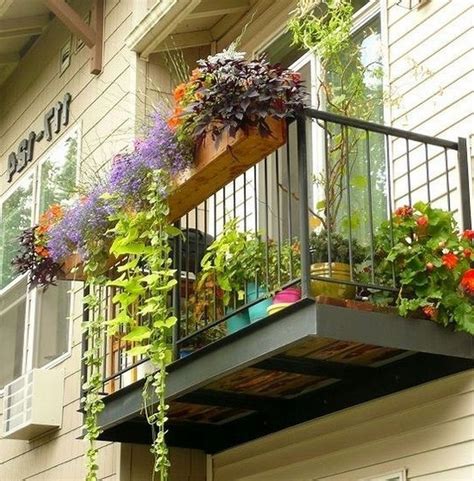Maximizing Your Balcony Garden: Seasonal Planting Tips for Small Spaces
Balcony gardening has gained popularity in urban environments, offering a green oasis in even the smallest of spaces. Understanding seasonal changes is key to creating a thriving container garden, especially for those practicing urban gardening. This guide covers essential tips on seasonal planting, plant selection, and design strategies to ensure your balcony garden flourishes year-round. Whether you’re an experienced gardener or a beginner, these insights will help you grow a lush, vibrant garden no matter the season.
Key Concepts of Seasonal Balcony Gardening
- Seasonal planting: Selecting plants that thrive in the current season is critical for growth and yield.
- Balcony gardening: Utilizing small, outdoor spaces to create functional gardens.
- Container gardening: Growing plants in pots and containers to maximize space efficiency.
- Urban gardening: Adapting gardening practices to fit the constraints of city living, including limited space and sunlight.
Historical Context: The Evolution of Balcony Gardens
The concept of urban gardening isn’t new. Cities like ancient Rome and Babylon used rooftop and courtyard spaces to grow food and decorative plants. In more recent times, balcony gardening has evolved in response to increased urbanization, providing a solution to the lack of yard space in densely populated areas. As apartments became the primary living arrangement for many, balcony gardening emerged as a way to maintain a connection to nature and fresh produce.
Current State Analysis of Balcony Gardens
Today, balcony gardening is a widespread practice across cities globally. More urban dwellers are recognizing the benefits of small space gardening, from improving air quality to creating a calming space. With climate change influencing planting seasons, understanding seasonal planting is even more essential for balcony gardeners. Many turn to container gardening for flexibility, allowing them to move plants as seasons shift.
Practical Applications: What to Plant Each Season
The key to balcony gardening success is choosing the right plants for each season. Here’s a breakdown of what to plant:
Spring
- Herbs: Basil, mint, cilantro
- Flowers: Marigolds, pansies, and petunias
- Vegetables: Spinach, lettuce, radishes
Summer
- Fruits: Strawberries, tomatoes, peppers
- Flowers: Zinnias, sunflowers, and geraniums
- Herbs: Oregano, thyme, basil
Fall
- Vegetables: Kale, broccoli, beets
- Flowers: Chrysanthemums, asters
- Herbs: Parsley, rosemary, sage
Winter
- Hardy herbs: Thyme, rosemary, sage
- Cold-resistant vegetables: Kale, spinach
- Decorative plants: Evergreen shrubs, ferns
Case Studies: Successful Balcony Gardens in Urban Environments
| City | Garden Type | Seasonal Focus | Challenges | Success Factors |
|---|---|---|---|---|
| New York City | Herb and Vegetable Garden | Spring and Summer | Limited sunlight, wind exposure | Use of compact, fast-growing crops, windbreaks |
| Tokyo | Decorative Flower Garden | Year-round | Temperature fluctuations, air pollution | Careful plant selection, pollution-resistant varieties |
| Paris | Mixed Garden (Edible and Decorative) | Spring to Fall | Space constraints, varied light levels | Vertical gardening, shade-tolerant plants |
Stakeholder Analysis: Who Benefits from Urban Balcony Gardening?
Several groups can benefit from the rise of urban gardening and balcony-based plant cultivation:
- Urban residents: Balcony gardens provide a green respite, enhance mental well-being, and can offer home-grown food.
- City planners: Encouraging balcony gardens helps improve air quality and reduces the urban heat island effect.
- Environmentalists: Urban gardens contribute to biodiversity and green living by reducing the carbon footprint of food transportation.
Implementation Guidelines: Setting Up a Year-Round Balcony Garden
- Assess the environment: Identify sunlight exposure, wind levels, and space limitations.
- Select appropriate containers: Choose pots with good drainage and insulation for seasonal shifts.
- Use vertical space: Maximize growing area with shelves, hanging pots, or vertical planters.
- Pick the right plants: Choose plants suited to the specific season and microclimate of your balcony.
- Rotate crops: Regularly change plants according to the season for a continuous harvest.
Ethical Considerations in Urban Gardening
While balcony gardening offers numerous benefits, ethical considerations include the use of resources like water and the potential for non-native plant species to disrupt local ecosystems. Gardeners should prioritize eco-friendly practices, such as using recycled materials for pots and conserving water through rainwater collection.
Limitations and Future Research
Despite the growing interest in container gardening, certain limitations exist. For instance, restricted space and varying light conditions may limit what can be grown. Future research should focus on developing more efficient container systems and drought-resistant plants suitable for urban environments.
Expert Commentary on Balcony Gardening
Experts agree that balcony gardening is not only a practical solution for urban dwellers but also an important step towards sustainable living. By making small adjustments, such as selecting seasonal plants and using space-saving techniques, anyone can cultivate a thriving garden on their balcony. With the growing need for green living, balcony gardening is poised to become an essential part of urban life.


